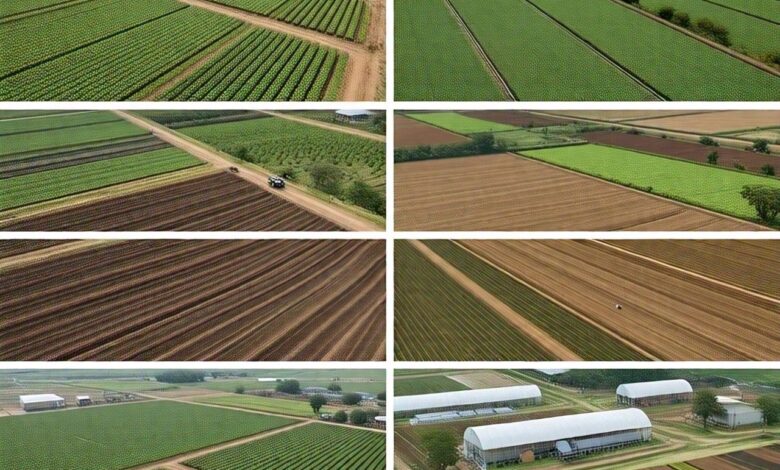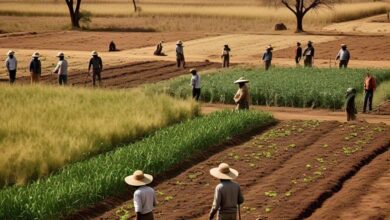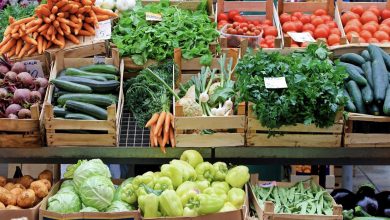Precision Agriculture in Zimbabwe: Leveraging Tech for Efficient Farming

Precision agriculture is transforming farming practices across Africa and Zimbabwe is no exception. This innovative approach uses advanced technology to optimise crop yields, reduce waste and promote sustainable agriculture. By harnessing cutting-edge tools and data analytics, Zimbabwean farmers are boosting productivity and profitability in their fields.
What is Precision Agriculture
Precision agriculture is a modern farming approach that uses advanced technology to optimise crop and livestock production. It aims to make farming more efficient, productive and environmentally friendly. It does so by collecting detailed data about individual plants, field and weather conditions using tools like GPS, drones, and sensors.
Additionally, it then analyses this data to identify patterns and variations within fields. It also then uses this information to make more precise decisions about when and where to apply fertilisers, pesticides, or water. It also helps farmers know how much seed to plant in different areas and the optimal planting and harvesting times.
Furthermore, precision agriculture helps farmers apply resources like seeds, fertilisers, or chemicals at varying rates across fields based on the specific needs of different areas. Finally, it helps in monitoring crop health and growth in real-time to catch problems early.
The goal of precision agriculture is to reduce waste, conserve resources and maximise yields while minimising environmental impact. It’s like giving a farm a high-tech makeover to make it run smoother and more efficiently.
Smart Farming Solutions Taking Root
From satellite imaging to IoT sensors, Zimbabwe must embrace a wide range of precision agriculture technologies. These tools allow farmers to monitor soil conditions, track moisture levels, and identify potential issues early on. This data-driven approach enables more precise application of fertilisers, pesticides, and water – resulting in significant cost savings and reduced environmental impact.
One notable example is the use of drones equipped with multispectral cameras. These aerial vehicles can quickly survey large areas, providing valuable insights on crop health and growth patterns. This information is then analysed using sophisticated algorithms to generate detailed maps and reports, guiding farmers’ decisions on irrigation, pruning and harvesting. They are also used to spray pesticides as they have a carrying capacity of 40 litres. This enables efficient crop protection.
Data Analytics Drives Decision Making
At the heart of precision agriculture is the ability to collect, analyse and act upon vast amounts of data. A number of Zimbabwean commercial farmers that are highly literate with vast resources are increasingly turning to e-agriculture. Some use specialised software platforms that crunch numbers and provide actionable insights. These systems can predict yield potential, identify disease outbreaks, and suggest optimal planting dates based on historical climate patterns.
By leveraging machine learning and artificial intelligence, these platforms are becoming smarter over time, continually improving their accuracy and relevance to local conditions. This empowers farmers to make data-backed decisions, minimising risks and maximising returns.
Digital Extension Services Expand Reach
Traditional extension services face challenges in reaching remote rural areas, but technology is striving to bridge this gap. Mobile apps, online portals and predominantly simple mobile phones are connecting farmers directly with experts and resources. These platforms offer access to best practices, market information, and troubleshooting advice – often in local languages.
Moreover, virtual reality tools are vital to simulate different farming scenarios, allowing farmers to experiment with various techniques in a risk-free environment. This immersive technology is particularly valuable for training younger generations of farmers who may be less familiar with traditional methods. Therefore, the incorporation of virtual reality will significantly improve precision agriculture in Zimbabwe across all socioeconomic statuses.
Challenges and Opportunities
While precision agriculture holds immense promise, there are still hurdles to overcome in Zimbabwe. Infrastructure limitations, particularly in rural areas, can make it difficult to implement and maintain these technologies. Additionally, ensuring data privacy and security remains a critical concern as farmers share sensitive information through digital channels.
Despite these challenges, the potential benefits are substantial. By adopting precision agriculture techniques, Zimbabwean farmers could potentially increase yields by up to 20% while reducing input costs by 15%. This could have a significant impact on food security and economic development in the country.
Looking Ahead
As technology continues to advance at breakneck speed, we can expect even more innovative solutions to emerge in Zimbabwe’s agricultural sector. From autonomous farming equipment to blockchain-based traceability systems, the future of precision agriculture looks bright.
For policymakers and investors, supporting the development and adoption of these technologies could yield substantial returns in terms of agricultural productivity and economic growth. By fostering an environment conducive to innovation, Zimbabwe can cement its position as a leader in African agriculture.
In conclusion, precision agriculture has the potential to revolutionise farming practices in Zimbabwe, harnessing technology to drive efficiency and sustainability. As this innovative approach continues to evolve, it promises to transform the country’s agricultural landscape, ensuring a more productive and resilient food system for generations to come.





